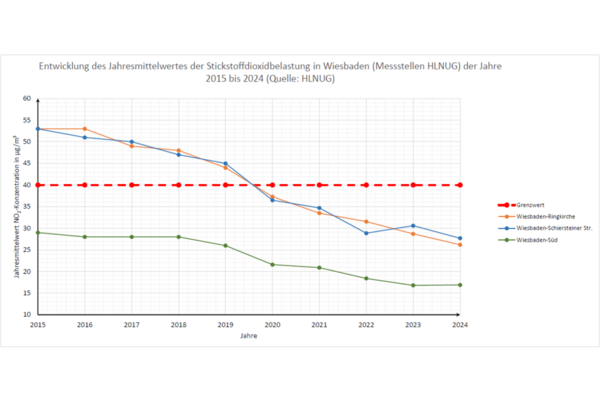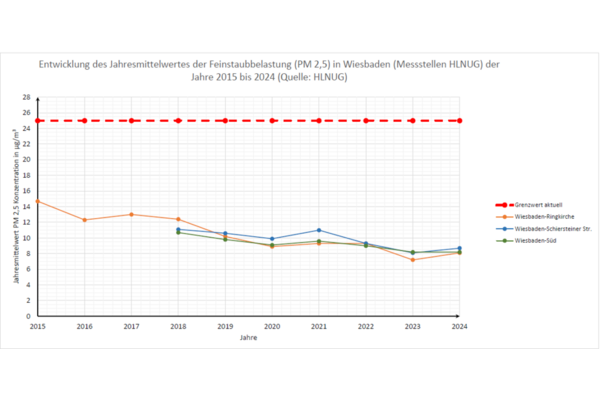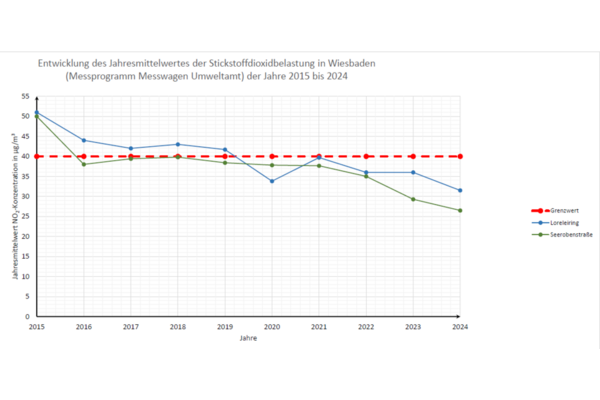Current air hygiene situation
Air pollution has improved significantly over the last 25 years.
Pollutants such as sulphur dioxide and benzene hardly play a role today and are only measured in special cases. Ozone is also not a major problem in the city, as it is mostly produced outside cities in hot weather.
Since 2015, the values for nitrogen dioxide (NO₂) in the urban area have fallen continuously, especially in areas with heavy traffic. This is shown in the figure below, which shows the development of the annual mean value for NO₂ at the three official measuring stations of the Hessian State Agency for Nature Conservation, Environment and Geology (HLNUG) in Wiesbaden. There was a particularly sharp decline in 2019. Since 2015, the values at the Schiersteiner Straße and Ringkirche measuring stations have been reduced by half. In addition to the measured values from HLNUG, measurement series from the Environmental Agency in the form of the measuring van and NO2 passive samplers can be found below. A passive sampler for determining nitrogen dioxide is a small tube with a special coating on the inside. Without electricity and built-in pumps, this tube collects NO2 from the ambient air. The Environment Agency changes the tubes every month, which are then analyzed in a laboratory. The results are used to assess the air quality.
The positive trend is not only due to the coronavirus pandemic. The closure of the Salzbachtal bridge did not lead to a renewed deterioration in air quality, despite additional traffic.
Particulate matter pollution has also decreased over the past few years and appears to be stagnating at a low level. For 2024, the measured values of the three HLNUG measuring stations for the particulate matter fraction PM 2.5 are currently around 8 µg/m³ on an annual average, well below the limit value of 25 µg/m³, as shown in the figure below of the development of particulate matter pollution PM 2.5 from 2015 to 2024. In general, not only the pure emissions play a role in these low concentrations, but also factors such as special weather conditions and can influence the measured values. An environmental zone was introduced in 2013 due to high values.
To improve air quality and protect health, the European Union is planning to set new EU air quality standards that include stricter limit and target values for NO2 and the particulate matter fraction PM 2.5, among others. It is planned to reduce the current annual average limit value for NO2 from 40 µg/m³ to 20 µg/m³ and the annual average limit value for PM 2.5 from 25 µg/m³ to 10 µg/m³. These are to apply from 2030.
Measures such as the increased use of low-emission vehicles (Euro 6/Euro 6d), the expansion of cycle paths, faster bus connections through special bus lanes and the conversion of the bus fleet to lower-emission models have contributed to the improvement and offer further reduction potential. A digital traffic control system (DIGI-V) should also ensure a reduction in pollutants in future.



